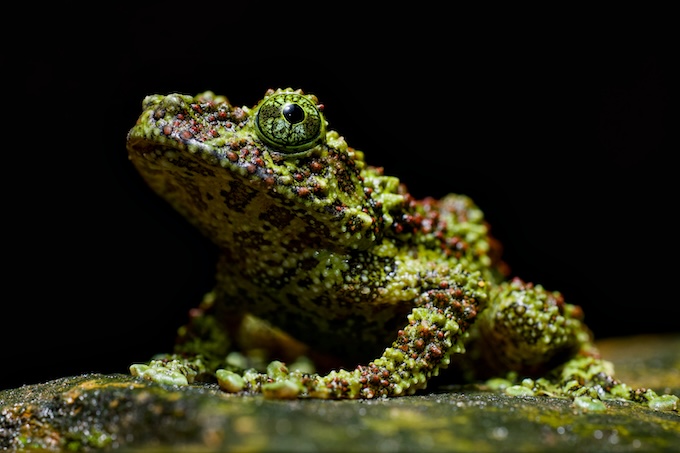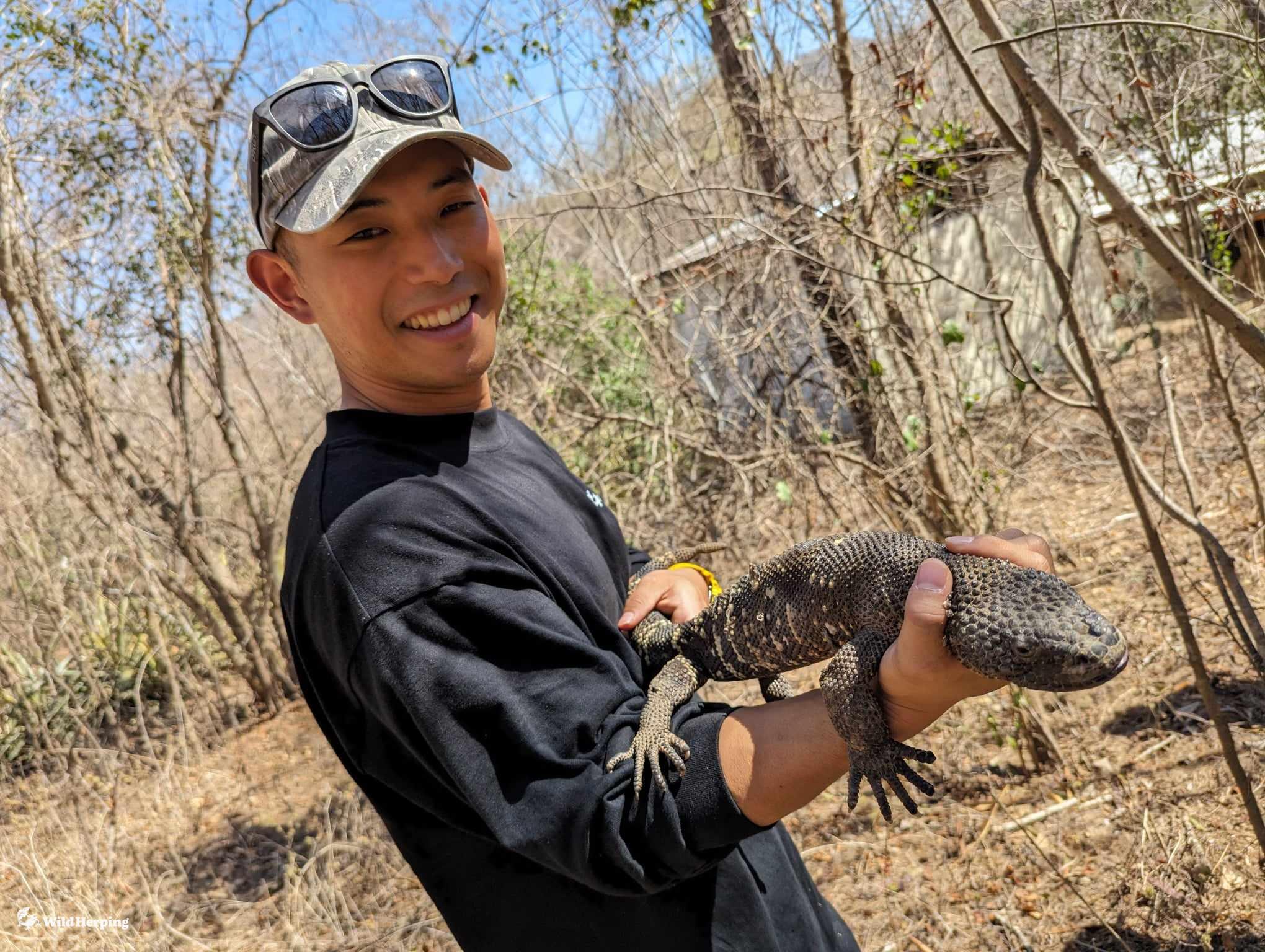During a recent herping expedition in Vietnam, I had the privilege of being guided by a local friend to a location known for its rare morphs of the Oriental Vine Snake (Ahaetulla prasina). This species, the largest of the vine snakes, is native to Southeast Asia and is an adept predator, mainly preying on reptiles such as geckos and lizards. Occasionally, they will also target birds and amphibians.
What makes this snake even more fascinating is its fully arboreal lifestyle, spending almost all of its time in trees. Spotting one can be incredibly challenging, requiring a keen eye and persistence. In Japan, herping often involves scanning the ground, but in Vietnam, it was all about looking up into the canopy to catch a glimpse of these elusive creatures.
My mission on this trip was to photograph two incredibly rare color morphs of the Oriental Vine Snake: a striking yellow morph and a leucistic white individual. Vietnam was in the midst of its rainy season, making travel difficult, but with a bit of luck and persistence, we found both targets, making it a truly memorable night.
The Yellow Oriental Vine Snake
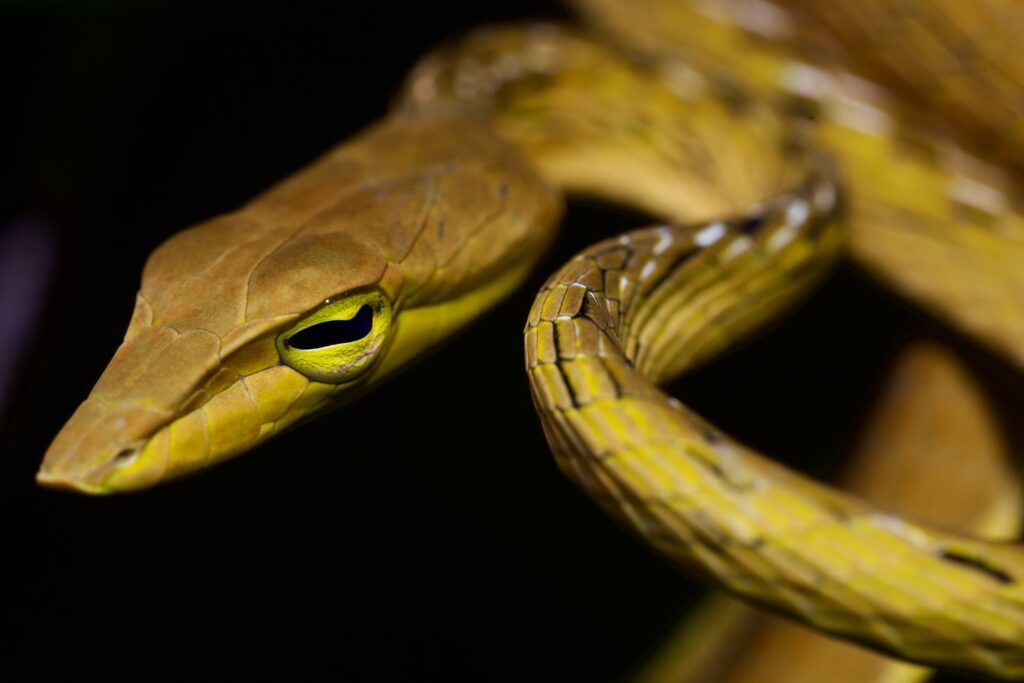
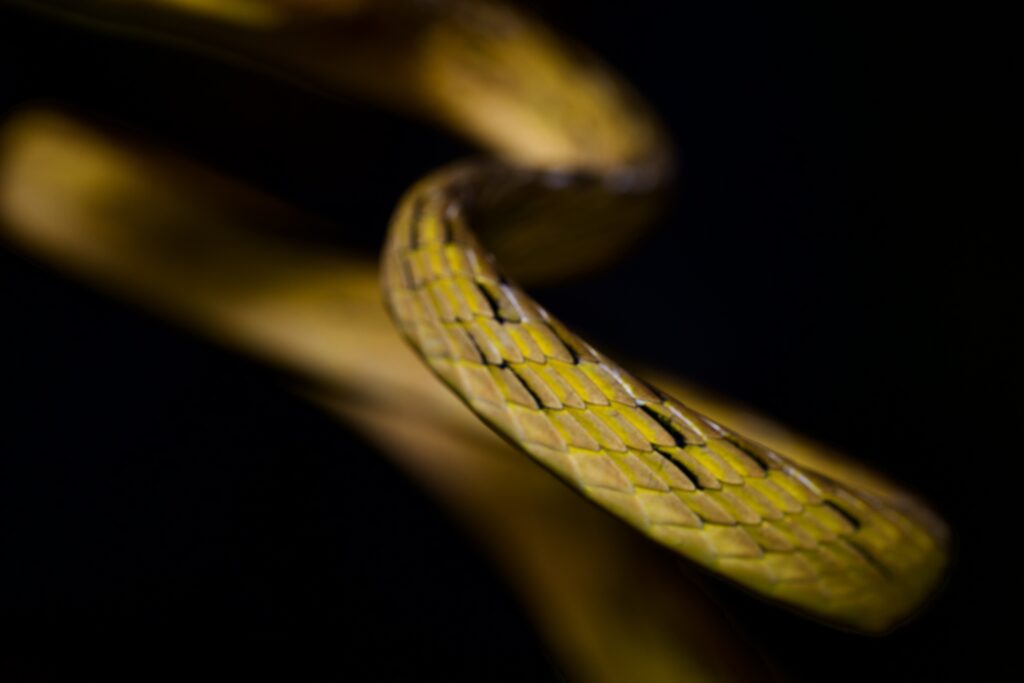
The first snake we spotted was the stunning yellow morph. This individual was perched around three meters high in the trees, its bright coloration making it easier to spot even in the rain. The cause of this vibrant yellow hue is unknown, but it is likely the result of a genetic mutation where the usual green pigmentation is absent. It’s interesting to note that in this region, we didn’t observe any green morphs at all—only yellow and white individuals. This leads to speculation that there may be a genetic shift or isolation causing these unique morphs.
The Leucistic Vine Snake
The second snake we encountered was even more remarkable: a white, leucistic individual. Its pure white body, marked with striking black patterns, was a sight to behold amidst the greenery of the forest. Leucism, a condition where pigmentation is reduced but not entirely absent, results in these individuals having a stark, uncamouflaged appearance. How these snakes manage to survive with such conspicuous coloring in a dense forest remains a mystery, but it was certainly a rare and exciting find.
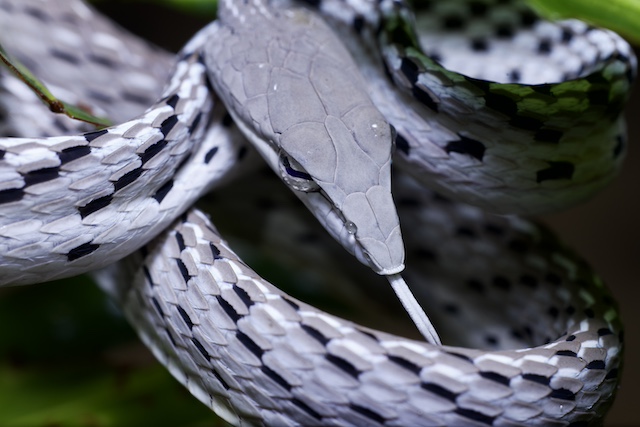
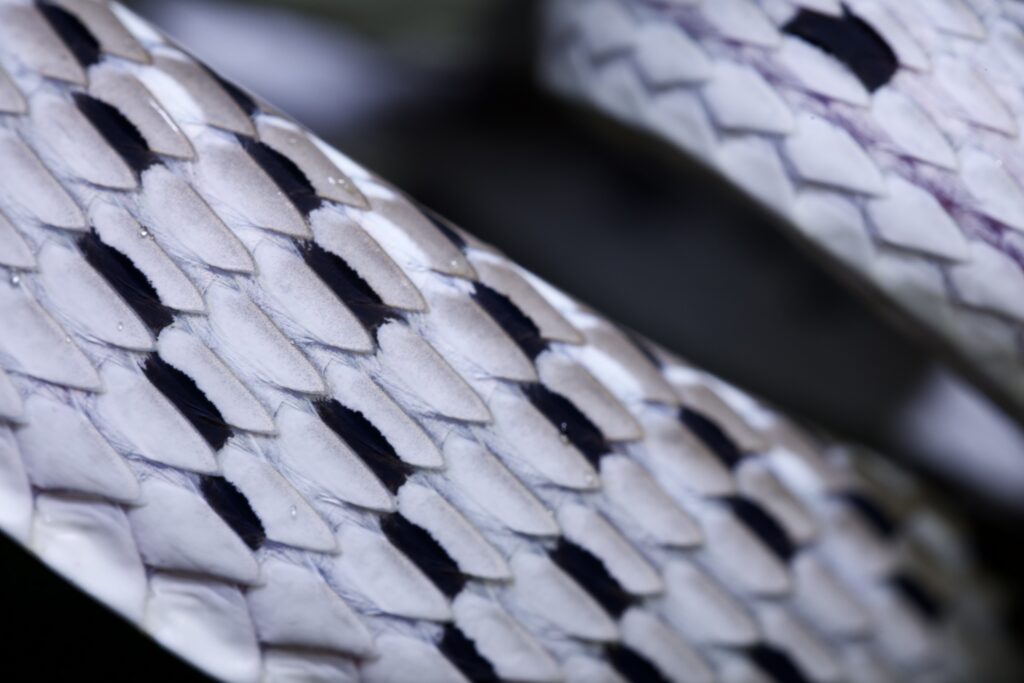
Characteristics and Ecology of the Oriental Vine Snake
The Oriental Vine Snake is named for its long, slender body and pointed, triangular head, which resemble a vine. This snake has a distinctive feature: its forward-facing eyes and horizontally elongated pupils. This allows the snake to focus on its prey with both eyes, giving it excellent depth perception—a useful trait when hunting camouflaged lizards.
While the typical coloration of these snakes is a vibrant green, we observed rare yellow and white morphs on this trip. Juveniles of the species are usually brown, gradually changing color as they mature. Interestingly, we also spotted a juvenile that appeared to be transitioning between yellow and white, suggesting that color changes might occur as they grow.
A Word of Caution
The Oriental Vine Snake is mildly venomous and belongs to the colubrid family of rear-fanged snakes. While their venom is not lethal to humans, handling them should be done with care to avoid envenomation. As always in herping, it’s important to respect the wildlife and avoid unnecessary risks.
Final Thoughts
Herping in Vietnam during the rainy season can be tough, but finding these rare color morphs of the Oriental Vine Snake made it all worth it. From the vivid yellow morph to the dazzling leucistic form, this adventure was a true highlight. If you’re passionate about herping and want to discover some of the world’s most unique reptiles, a journey through Vietnam’s rainforests is an experience you won’t want to miss.
Whether you’re a seasoned herper or just starting out, the excitement of encountering rare species like these makes every trip an unforgettable experience. Ready to explore the uncharted herping spots of Vietnam and seek out these remarkable snakes for yourself? Grab your gear, head into the rainforest, and see what you can find!
Other Vietnam herping blog
